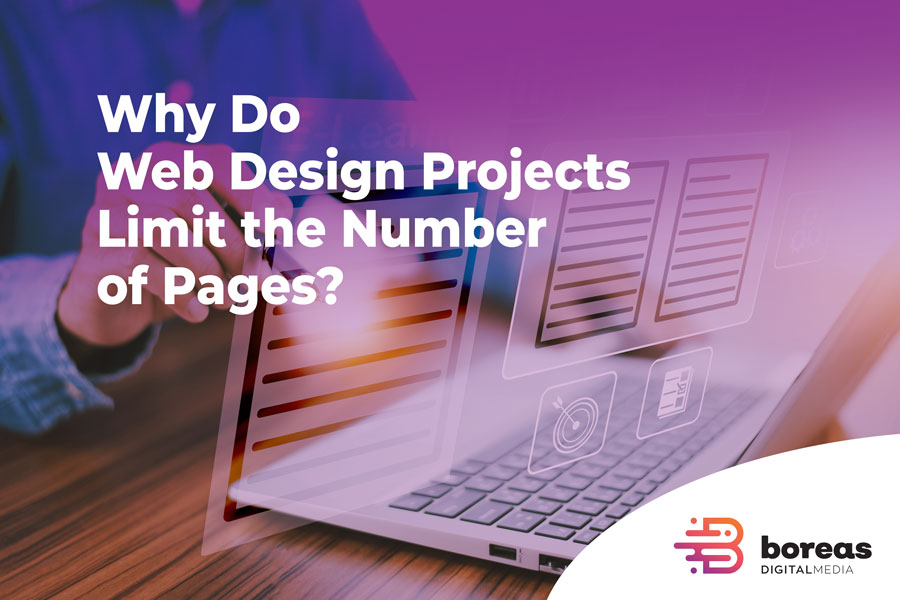If you’ve ever looked at pricing tables for web design services, you’ve probably noticed something like: "Includes up to 4 pages" or "From 1 to 5 pages." And maybe you’ve wondered: "Wait, why does it matter if I want one page or ten? Isn’t it just copy-paste? Can’t I just add more pages later? Isn’t WordPress unlimited?"
Those are great questions—and they come up more often than you’d think. So let’s break it down.
WordPress Doesn’t Limit Pages (At All)
First things first: WordPress doesn’t have any technical limit on how many pages you can create. None. You can build a site with 1 page or 10,000. Pages can be added manually, cloned from existing ones, or even generated dynamically.
So no, the number of pages you see listed in a package has nothing to do with a platform limitation. It has everything to do with time, planning, and quality.
Each Page Is Its Own Micro-Project
Designers limit the number of pages in a package because each page requires dedicated work. It’s not just writing a few paragraphs and hitting publish:
- The page needs structure and layout.
- It must follow UX and conversion principles.
- It needs custom design, mobile responsiveness, and performance optimization.
- It requires SEO optimization: titles, meta descriptions, headings, alt tags...
- It often includes dynamic elements: contact forms, embedded maps, galleries, etc.
- And perhaps most importantly, each page serves a different purpose: your homepage introduces and invites, your services pages persuade and inform, your contact page drives action. Each one has its own message, tone, and functionality—it’s like building a small campaign around every single page.
So yeah—it’s not "just a page." It’s hours of thoughtful work, and all of it adds up.
And beyond all the technical work, there's a strategic question to answer: what does your business actually need right now? One of the most common questions we get is: how many pages should a website have? And the answer is: it depends. On your business goals, your current stage, the kind of services you offer, and how you want users to interact with your site.
If you're just getting started—which is the case for many of our clients—you probably don’t need a 10-page website. A compact site with four or five well-crafted pages can present your company and services clearly, build trust, and keep the project within a budget that’s easier to manage. Later, when your business grows, your website can grow with it. That’s the beauty of scalability.
If you’re not sure what your site needs, we’ve got you covered. Check out our Website Design service for more details and examples of what a well-structured, strategic website can do for your business.
Quality Takes Time (and Time Has a Cost)
At Boreas Digital Media, we’re transparent about what’s included because we want to do things right. A four-page website that’s clean, fast, and search-friendly takes planning, strategy, and execution.
This includes things the client often doesn’t see:
- Information architecture
- Design mockups, templates, custom elements and revisions
- Plugin setup, configuration and testing
- Form testing and email routing
- Mobile and accessibility compliance checks
- Image optimization and caching
Limiting the number of pages allows us to maintain quality and clarity within a budget that’s both affordable for our clients and sustainable for us. You know what you’re getting, and we know we’re building something solid—something that lasts, evolves, and scales with your business.
Want to know the estimated cost of your web project?
Try our pricing estimator. It’s simple, fast, free—and it doesn’t commit you to anything.
What If You Need More Pages Later?
No problem. The sites we build are scalable. You can add new pages at any time—either with our help or on your own. Our websites are designed to grow with your business, making them a long-term investment, not just a short-term solution.
In fact, we go out of our way to train our clients so they can manage their site with confidence. We believe you should always have full control of your website, and we’re here to help you grow it over time.
If you want us to design and build more pages later on, we can do that too. We offer this kind of work on a per-hour basis, with transparent pricing and no surprises.
Bonus: Blog Posts vs. Pages
Some people ask: “But what about blog posts?”
Good point. Blog posts are technically a different type of content in WordPress. They follow a common template and are made to be repeatable. Pages, on the other hand, often require unique layouts, copywriting, and features.
That said, setting up a blog section is not as simple as flipping a switch. It usually requires its own template, pagination, breadcrumbs, category systems, related post logic, and sometimes a commenting system—all of which take planning and development time. Not to mention the SEO work behind the scenes.
That’s why we treat blog functionality as an additional service. It’s powerful, but it’s not automatic. And that’s also why a blog can have 100 posts and still be part of a "5-page" website—because those posts all live under one functional section, built with intention.
Bottom Line
We limit the number of pages included in a website project because we care about quality. Not because WordPress can’t handle more. We don’t do cookie-cutter websites—we build smart, scalable tools for your business.
So if you’re wondering how many pages your site should have, or whether you can grow it in the future, let’s talk.

